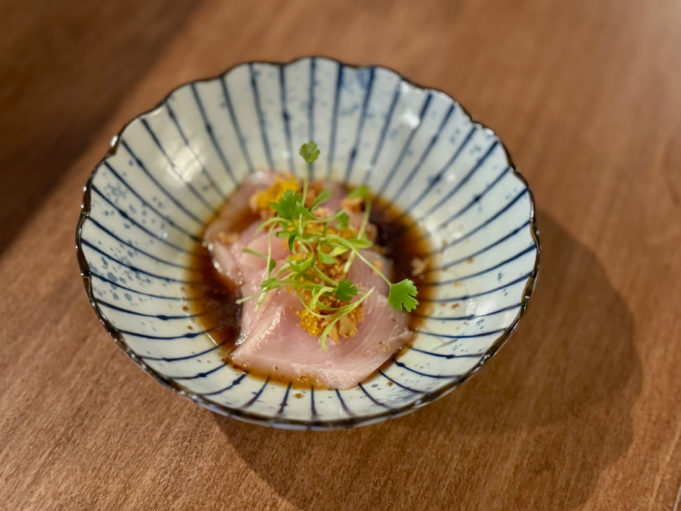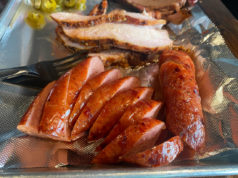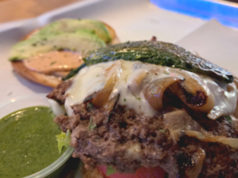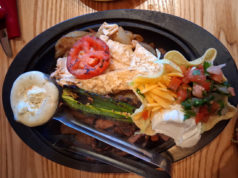Yoichi Omakase and Handroll Bar, 711 W Magnolia Av, Fort Worth. 682-326-1994. 4:30-9:30pm Sun-Thu, 4:30-10:30pm Fri-Sat.
The blade tip of the knife in the hand of Chef Ian Kim gently glided into the yellowtail meat with a precision that translated into meticulous presentation for each dish served from the staff manning the open kitchen at Yoichi (meaning “night market” in Japanese). West Magnolia Avenue’s newest Asian eatery in the former Shinjuku site softly opened in early October with a focus on the omakase and handroll experience that locals are familiar with due to fan favorite Hatsuyuki in the West 7th corridor.
Along with Chef Ian are two partners: Chef Won Suhr, who trained at Tsuji Culinary Institute in Osaka, Japan; and Chef Mark Kim, with 20 years of sushi craft experience. All three have established their reputations by working in some of Dallas’ premier sushi restaurants, including Nobu, Uchi, Crown Block, and Sushi by Scratch. These masters of their profession have brought their collective experience to Fort Worth’s dining scene, and we are grateful.
The slices of the mild yellowtail came served in a scalloped bowl, resting in a shallow pool of tangy mustard-garlic ponzu topped with crunchy onion chips and Thai chili. This dish of hamachi was an encouraging start to dinner.

Photo by Cody Neathery
Appetizers of miso soup, shishito peppers, and edamame are safe choices, but the wasabi-flavored baby octopus may offer the most intrigue. The robust flavor of the wasabi without a sinus-clearing amount of horseradish worked nicely with the fishy tentacles.
Since it’s bad luck to pour your own sake, my guest and I took turns serving each other from a cold, unfiltered bottle as we cruised through each selection of crudo, or raw fish or seafood simply dressed with citrus, vinegar, olive oil, and/or other seasonings.
The slightly sweet rice-based alcohol paired well with the Bluefin tuna crudo surrounded by vinegary coconut zu (juice) and topped with coconut jelly and honeydew squares along with mint leaves for an uplifting pop. White truffle oil and sesame miso sauce blended well when scooped with a slice of silky salmon crudo covered with a crispy rice cracker known as bubu arare for contrast. The sweet-and-sour onion pear zu joined well with the relish and crackling kataifi (traditional Middle Eastern dough), which brightly complemented the slivers of snapper crudo.
Along with a paper menu, wood blocks on the brick wall announce your choices and the specials of the day. Any questions will be gladly answered by the friendly staff. My guest and I opted for two of the specials served as nigiri: the salmon toro (fatty salmon belly), which was obnoxiously good thanks to its rich, velvety, subtly sweet characteristics; and the sawara, a Japanese Spanish mackerel, torched to a light surface char and brushed with brown butter garlic sauce. My guest and I agreed this was the best bite of the dinner.
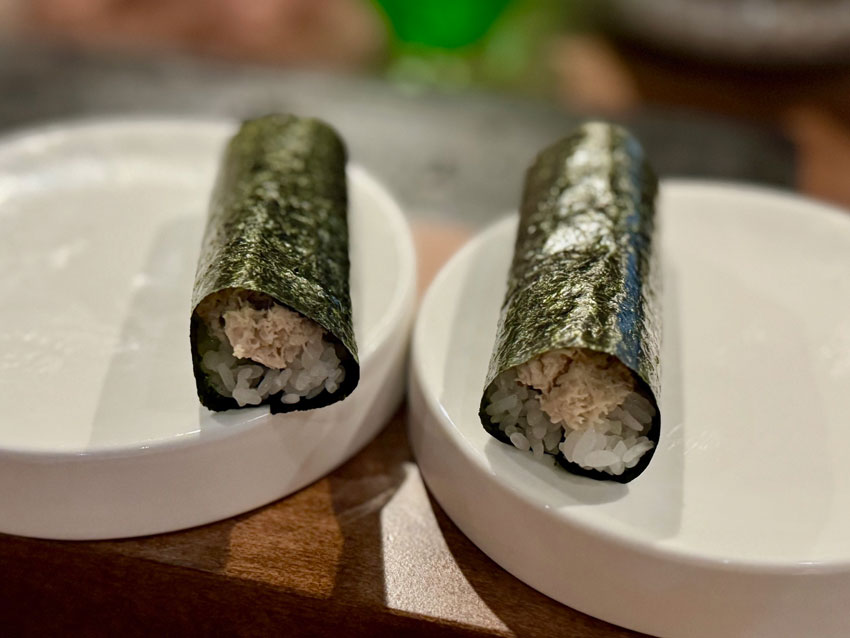
Photo by Cody Neathery
From the regular menu, we went with the hotate (Hokkaido scallop), a charred delectable bite, and the botan ebi (sweet shrimp), which stayed true to its title. The most interesting part of the dish was the flash-fried shrimp head. Chef Won recommended to bite into the underside of the fused head and thorax, where the meat resides, then polish off the rest, allowing the eater a chance to look into the beady eyes of the crustacean.
Some nigiri options share meat with the crudo. Other items include salmon egg, freshwater eel, and deep-red tuna.
Moving onto the handrolls, we kept it simple by ordering a spicy tuna and crab that came rather plump with meat and rice, making the price points attractive. There are pre-chosen options ranging from three to five rolls with slightly lower pricing than ordering a la carte. Shrimp katsu, unagi, and negi hama make appearances alongside vegetarian rolls such as avocado, eggplant, and seasoned Japanese gourd shaving. Adventurous diners putting themselves into the hands of the creators can enjoy omakase, featuring a chef’s choice of the season’s best for $85.
The restaurant’s logo of an owl with one eye, hand-drawn by Chef Ian, symbolizes a collaborated growth between Yoichi and the surrounding neighborhood, using experiences and stories to come together to form and see with the second eye. A goal worth looking forward to.
Yoichi Omakase and Handroll Bar
Tuna $18
Hamachi $16
Salmon $16
Spicy tuna roll $6.75
Crab roll $6
Fatty salmon belly roll $5.50
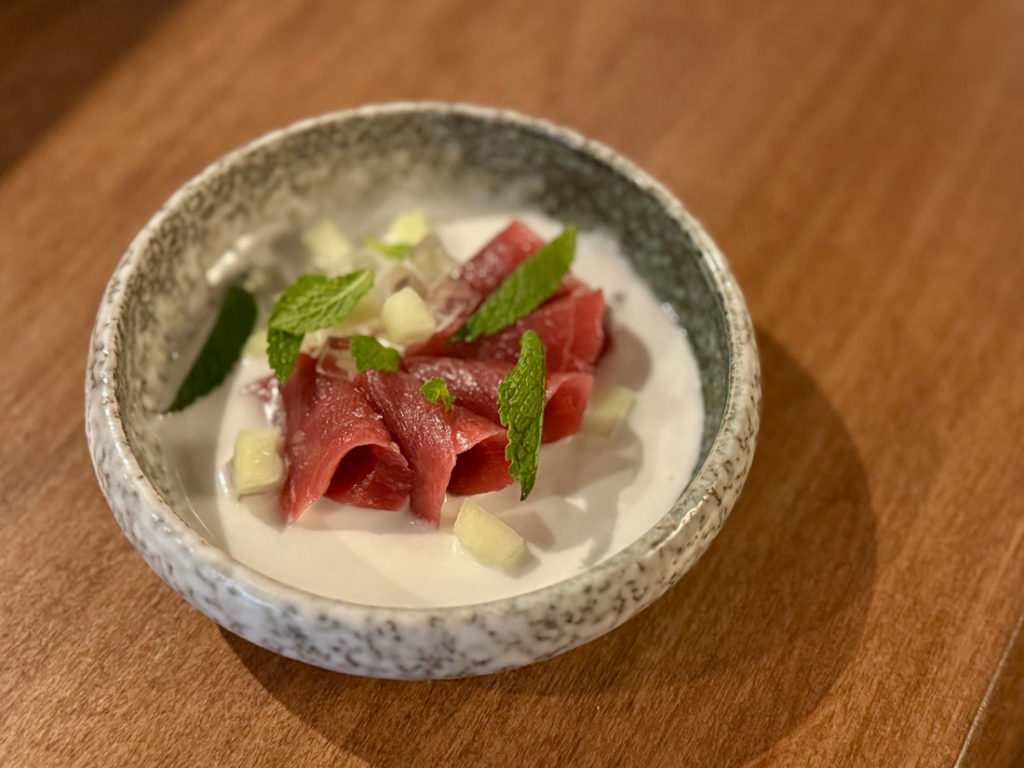
Photo by Cody Neathery

Photo by Cody Neathery



